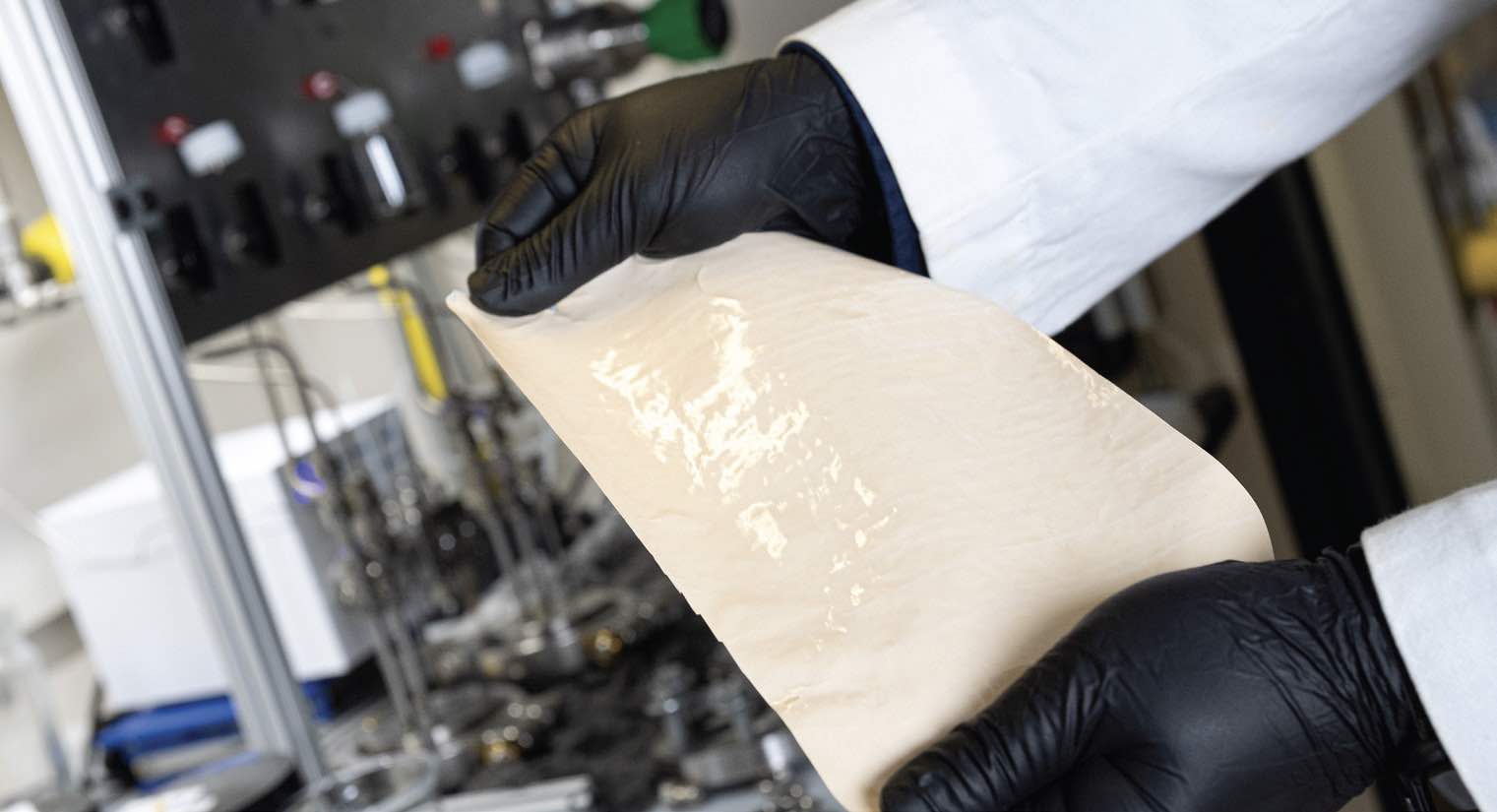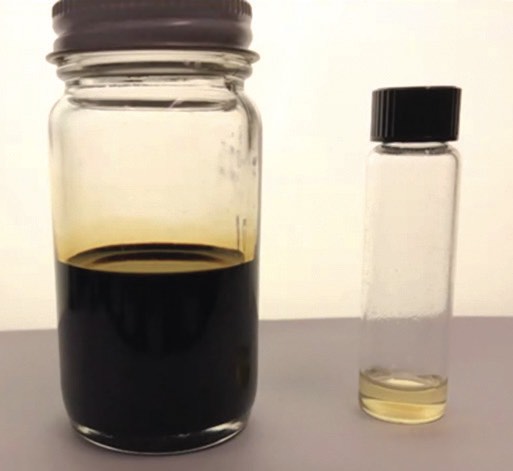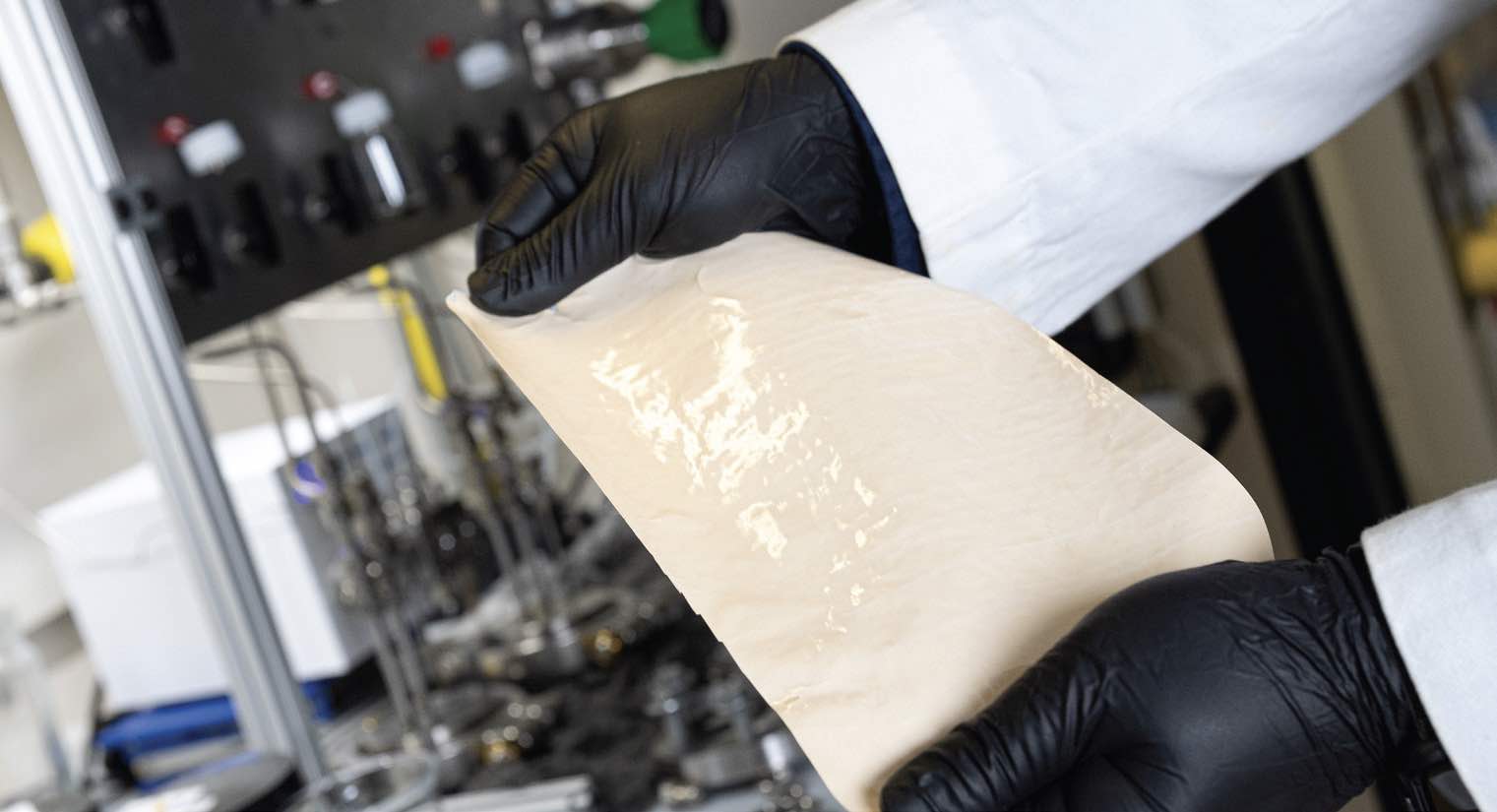Administration of the project
Membrane separation of crude oil
By Dr. Neil Canter, Contributing Editor | TLT Tech Beat March 2024Thin-film composite membranes prepared with a new type of polymer demonstrate promise in separating crude oil components.
HIGHLIGHTS
• Separation of crude oil by the use of fractional distillation is energy intensive.
• DUCKY polymers are showing potential in separating lighter crude oil liquid components from heavier ones.
• Membrane separation can be used as a complement to fractional distillation to lead to a reduction in energy use and carbon intensity.
Crude oil contains thousands of hydrocarbons. For over a century, the leading process for purifying and separating components in crude oil has been fractional distillation.
According to the U.S. Energy Information Administration,1 crude oil is separated into six streams (butane and lighter products), gasoline blending components, naphtha, jet fuel, diesel, heavy gas oil and residual fuel oil. The temperatures where these six fractions are isolated range from less than 30 °C to greater than 565 °C. Further processing steps are undertaken to produce products such as lubricant base oils.
Ryan Lively, the Thomas C. DeLoach Jr. Professor in the School of Chemical and Biomolecular Engineering at Georgia Tech in Atlanta, Ga., says, “The petroleum industry has over 100 years of experience in fractional distillation. While separating crude oil into these various fractions is very effective, approximately 1,100 terawatt-hour of energy is consumed, which is somewhere between 0.5% and 1% of total global energy consumption.”
One approach to reduce energy consumption is to complement fractional distillation by using polymer membranes to separate lighter from heavier compounds. Lively says, “Polymer membranes that have the potential for separating lighter liquid components from heavier ones must exhibit high free volumes, and limited swelling. The role of these polymer membranes is not to be a transient filter that retains specific components but rather be a permselective penetrable sheet that will produce light crude oil fraction in a steady-state process.”
Leading candidates for separating liquids of different molecular weights and chemical class are engineering polymers that have good chemical resistance. Lively says, “We developed a family of polymers known as spirobifluorene aryl diamines (SBADs) that display a moderate degree of polymer chain mobility, enabling the separation of liquids based on size and class. Initial work with a light shale crude seems promising, as molecules with molecular weights greater than 170 grams per mole were largely rejected by the membrane while the membrane permeate product was significantly enriched in these light compounds.”
Two other research groups have since entered into this research area, made their own membranes and also have shown effective crude oil separation performance.
DUCKY polymers
The Georgia Tech team lead by professor Ryan Lively and M.G. Finn synthesized a new type of polymer by using the copper-catalyzed azide-alkyne cycloaddition reaction (CuAAC). This click chemistry process is a simple reaction that links up two species at high yields. Lively says, “This process, which was acknowledged in the 2022 Nobel Chemistry Prize, facilitated the formation of triazole analogues to the SBAD polymers. These newly formed membrane candidates are known as DUCKY polymers in reference to the CuAAC (pronounced ‘quack’) cycloaddition reaction used to produce them.”
To evaluate the DUCKY polymers, the researchers prepared thin-film composite membranes approximately 50-600 nanometers in thickness by blade coating them on chemically-stable polymer supports (see Figure 1). Macroscopic properties of the DUCKY polymers such as density, glass transition temperatures, surface area and thermal decomposition temperatures showed these materials are stable up to high temperatures.

Figure 1. DUCKY polymers are showing promise in separating crude oil components. The membranes were prepared by blade coating them on chemically stable polymer supports. Figure courtesy of Candler Hobbs, Georgia Institute of Technology.
Initial experiments were conducted to determine the potential performance of DUCKY polymers by cross-flow filtration of oligo (methylstyrene) standards in ethanol and toluene and on low molecular weight hydrocarbons such as tetralin. Lively says, “Two of the polymers designated as DUCKY-9 and DUCKY-10 displayed high permeances and solute rejections for molecules with molecular weights greater than 500 grams per mole in both ethanol and toluene. Both polymers did a poor job of rejecting low molecular weight aromatics, but this result was probably not going to be a reflection of their performance on the higher molecular weight crude oil fractions.”
The next step was to find out how well the DUCKY polymers performed in separating light fractions from an Arabian light crude feed, which is heavier and more viscous than the shale oils that the team fractionated with the SBAD membranes. Lively says, “The DUCKY polymers demonstrated the ability to enrich light crude feed at low stage cuts. Figure 2 shows an image of the Arabian light crude feed on the left and a sample that passed through the DUCKY-9a membrane.”

Figure 2. Membrane separation of an Arabian light crude feed (shown on the left) yielded the light-colored fraction on the right. Figure courtesy of ExxonMobil Technology and Engineering Co.
An important test for the DUCKY polymers was to ascertain if they could separate fractions from atmospheric tower bottoms (ATB), which are the heaviest distillation cut from atmospheric distillation towers during fractional distillation. Lively says, “This fraction typically cannot be distilled under atmospheric pressure. The DUCKY-10 membranes operating at a relatively low temperature of 140 °C and pressures of 55 bar were able to reject the heaviest compounds in the ATB while enriching the ‘light’ compounds out of this extremely heavy feed.”
One other benefit seen with the DUCKY polymers was the removal of heteroatoms such as nitrogen, and sulfur and heavy metals. Lively says, “The DUCKY-9 membranes removed roughly 50% of the sulfur, 66% of the nitrogen and removed nickel, tin and vanadium below detectable levels.”
Lively notes, “We believe that membrane separation can be used as a complement to fractional distillation, which will lead to a reduction in energy use and carbon intensity.” Additional information can be found in a recent article2 or by contacting Lively at [email protected].
REFERENCES
1. See here.
2. Bruno, N., Mathias, R., Lee, Y., Zhu, G., Ahn, Y., Rangnekar, N., Johnson, J., Hoy, S., Bechis, I., Tarzia, A., Jelfs, K., McCool, B., Lively, R. and Finn, M. (2023), “Solution-processable polytriazoles from spirocyclic monomers for membrane-based hydrocarbon separations,” Nature Materials, 22 (12), pp. 1540-1547.
Neil Canter heads his own consulting company, Chemical Solutions, in Willow Grove, Pa. Ideas for Tech Beat can be submitted to him at [email protected].


Be the first to comment